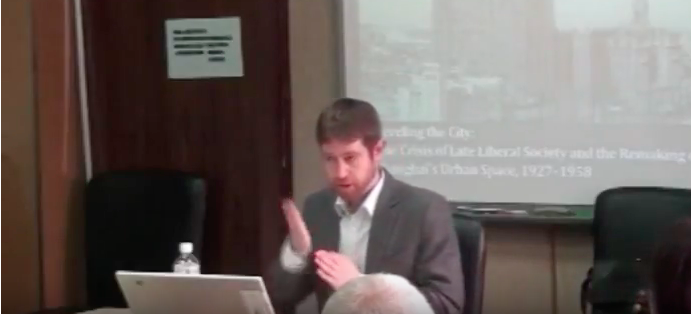
Leveling the City: The Crisis of Late Liberal Society and the Remaking of Shanghai’s Urban Space, 1927–1958. By Jake Warner
Leveling the City: The Crisis of Late Liberal Society and the Remaking of Shanghai’s Urban Space, 1927–1958
Speaker: Jake Werner
Date: April 22, 2015
In the last ten to fifteen years the research on urbanity has been very descriptive, especially in the US. Therefore Jake Werner tries to incorporate social theory in his research. He focuses on Shanghai in the 1950s and he does so through a re-interpretation of the literature on Shanghai in the 1930s. His goal is to map a trajectory of change from the 1930s to the 1950s in order to understand what
was happening in Shanghai during the 1950s.
The main question is where the Communist party got its ideas from and why they were appealing to such a big part of the electoral.His research starts from 1927 on because in that year the Shanghai massacre took place where the Kuomintang violently supressed the communist Party of China. Before that, Shanghai used to be the centre of Communism in China. Werner talks about the nature of the social crisis in China during the 1930s and 1940s and how reforms in the 1950s resolved this crisis after the Communist Party took power again in 1949.
In the 1930s Shanghai was very modern, a centre of trade and the epitome of Western capitalism.This in sharp contrast with the 1960s when Communism was deeply rooted in society. Why and how did this transition take place? Werner relates the everyday life of the working class to the larger changes taking place in the city. Thus he generates a top-down explanation of this crucial transition.
